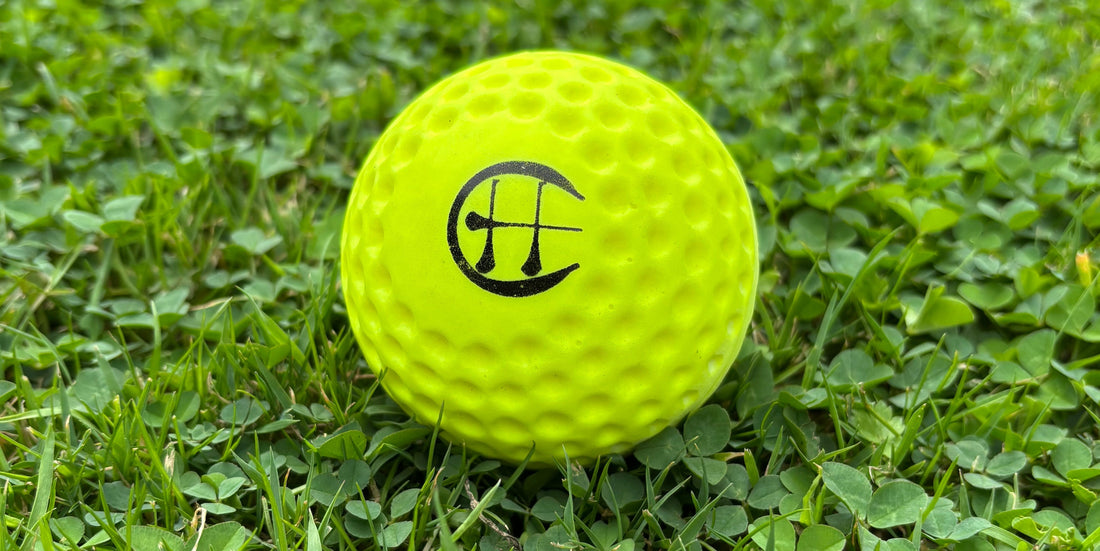
Speedballs in Hurling: The Best Training Ball for Wall Work
Share
Why Every Hurler Should Be Using Speedballs for Wall Ball Training
Ask any hurler the secret to sharpening touch, and you’ll hear the same advice: “Get yourself a wall and start hitting.” But here’s the problem — leather sliotars aren’t built to take a pounding against concrete. After a few sessions, they’re damaged or misshapen.
That’s why speedballs exist. These 100% polyurethane training balls are designed specifically for wall ball and concrete sessions. If you want to level up your hand–eye coordination without wrecking your good sliotars, speedballs are the answer.
What Are Speedballs in Hurling?
Speedballs look like sliotars, but they’re made from polyurethane instead of leather. That small change makes a huge difference:
- They don’t absorb water.
- They don’t lose shape.
- They last far longer on hard surfaces.
The catch? They’re not used in matches. Speedballs are strictly for training — especially for repetitive drills on walls, in school yards, or on concrete surfaces where a leather sliotar would be shredded in no time.
Benefits of Training With Speedballs
-
Protect Your Match Sliotars
Leather sliotars are expensive and designed for grass pitches. Save them for training on the field and for match day. Use speedballs for the wall. -
Durability
A single speedball can take months of strikes against concrete, making it one of the most cost-effective bits of kit you’ll own. -
Consistency
No matter the weather, speedballs keep their weight and bounce. That makes every training session predictable and sharp. -
Hand–Eye Coordination
Wall ball forces you to react instantly. With a speedball, you can put in hundreds of touches in a short session without worrying about destroying gear.
The Best Wall Ball Drills With Speedballs
-
One-Touch Striking
Strike against the wall, control on return, and strike again immediately. Build rhythm and speed. -
Weak Side Practice
Force yourself to use your non-dominant side for 20–30 reps in a row. It feels awkward at first but pays off on match day. -
Ground Striking on Concrete
Perfect for young players to sharpen ground hurling. The speedball bounces consistently without breaking down. -
Reaction Drills
Vary your strikes — low, high, angled — and challenge yourself to control whatever comes back.
The Limitations of Speedballs
They’re not a replacement for leather sliotars. The feel off the hurley is slightly different, and you’ll still need to practice with real sliotars to prepare for matches. Think of speedballs as a training companion, not a substitute.
Training Smarter: Pairing Speedballs With the Right Gear
Wall ball isn’t just about the ball — your supporting gear matters too. Here’s how our products fit naturally into a hurler’s training setup:
-
Hurling Holders (Single, Triple, Stainless Steel)
After a session, don’t dump your hurley and helmet in the hallway. A Hurling Holder keeps your gear organised, dry, and ready for the next wall ball grind. Hurling Holders -
HoldGrip Socks
Wall ball is all about sharp footwork. Grip socks give you stability and control on concrete, so you’re not slipping as you change direction. Holdgrip socks
Final Word: Why Every Hurler Needs a Speedball
If you’re serious about improving your first touch, striking rhythm, and reaction speed, a speedball is a non-negotiable. It’s the hardest-working training ball in hurling — designed to be battered off walls so your match sliotars don’t have to suffer.
Train smart. Save your leather balls for the pitch. And when training’s over, keep your gear in order with a Hurling Holder and gear built to last.